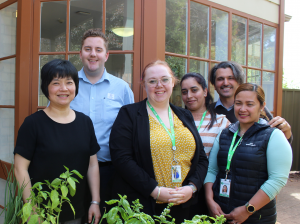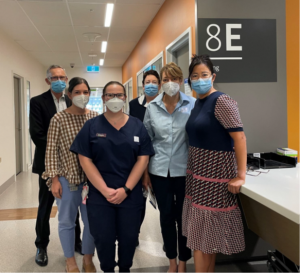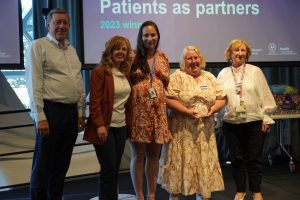Central Adelaide staff have been heavily involved in responding to COVID outbreaks in aged care facilities since the borders opened.
Dr Chloe Furst, Geriatrician consultant, and nurse unit managers Mark Dallman and Helen Burvill led our clinical response teams – at one point supporting between 20 – 30 facilities over the Christmas period.
The state’s approach was to aim to care for as many COVID patients in their own homes or residential facility to help reduce issues stemming from transporting a patient to hospital such as delirium, and hospital acquired complications.
To assist with this, the clinical response teams would assess the situation in a facility and provide support as needed – whether that was appropriate PPE, facilitating getting residents tested and putting in place appropriate infection control regimes.
For Aged Care Rapid Response Nurse Mark Dallman, it’s not just about infection control. “It’s also about recognising that this vulnerable client group are at greater risk of physical and mental deterioration during a facility outbreak due to isolation. It is crucial that strategies are employed, and systems developed to prevent such decline and avoid deconditioning.”
Dr Furst says her role as a doctor was to provide medical oversight for patients and to speak to the families about their goals of care.
“Together we could work out what could and couldn’t be provided in the residential facility and I could explain to families where there would be a benefit of moving into hospital,” Dr Furst says.
“For most of the patients, they wanted to stay where they were to be cared for which was consistent with the approach we were taking.”
And the clinical team can provide oxygen, antibiotics and infusions as required for patients.
New roles called Partners in Care were also created, where the aged care facility identifies family members or loved ones who can help provide care and take some of the load off the facility and provide a better experience for a resident.
“I think communication is a hugely important aspect in that setting – talking through with patients and families about the options and explaining to family that moving patients into hospital is not necessarily the best thing and that the high risk of delirium would not be beneficial for some patients.”
“It’s very different to working in a hospital than somewhere like an aged care facility – it’s very easy to have strict infection control when you’re in a hospital setting but it’s different from someone’s own home.
“It was really about building that team and building processes and structures that were going to be compatible with their work after we had left.”
As a result of this experience, clinical rapid response teams have been set up across the network to help support the aged care sector as required.
“There are also many GPs who are also doing a really fantastic job and we don’t hear about that as much. They are providing a lot of care to people in aged care, and they can call me and the team to get advice as well,” Dr Furst says.
“And that’s great because if it means that we can all support facilities to get through their outbreak.”
Aged care facilities are considered an outbreak site if a resident or two staff members test positive.
The State Government established clinical response teams to support residential care facilities to manage the outbreaks.



